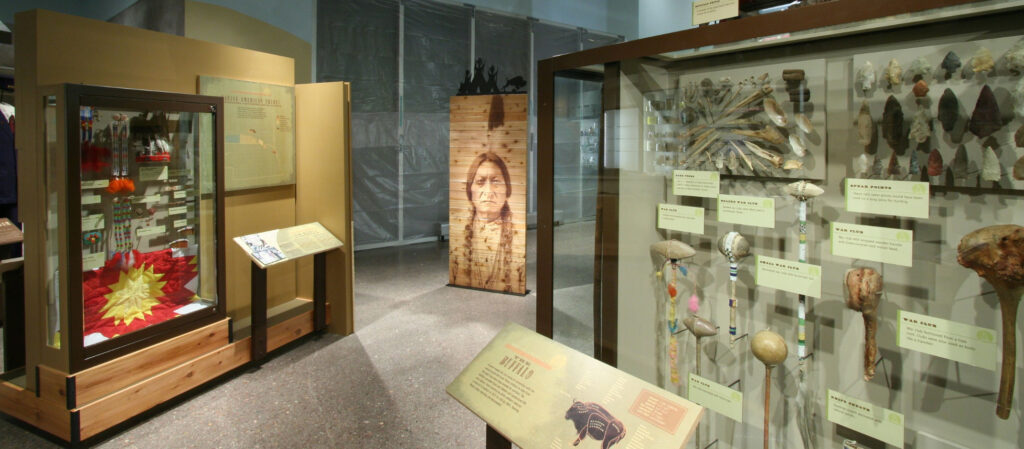In this digital age, technology has revolutionized countless aspects of our lives, including the way we experience museums. While digital museum exhibits may seem like the future, it’s time to debunk the myth that they are more effective than traditional physical exhibits. In this blog post, we’ll explore the advantages of physical museum exhibits to shed light on what makes working on this exhibit type at 1220 Exhibits so special and irreplaceable. Let’s dive in!
What are the Advantages of Museums?
Before delving into the drawbacks of digital museum exhibits, it’s crucial to highlight the enduring appeal of physical museums. In recent years, museums have witnessed a surge in popularity and attendance. According to a survey conducted by the American Alliance of Museums, attendance at U.S. museums has been steadily increasing, with over 850 million visits in 2019 alone.
While the COVID-19 pandemic had an impact on museum attendance, as temporary closures, reduced capacity mandates, and other rules and regulations were put into place for fear and safety concerns, museum attendance has returned to its pre-pandemic glory.
Museums offer an invaluable, immersive, and tangible experience that captivates visitors. They provide a space for people to engage with history, culture, art, and science firsthand. From standing in awe of ancient artifacts to admiring masterpieces, the physical presence of objects in museums creates a profound connection that digital exhibits and virtual engagement methods struggle to replicate.
Disadvantages of Digital Museum Exhibits
- Easy to Tune Out: One of the primary concerns with digital museum exhibits is the potential for visitors to become disengaged and easily distracted. With the ubiquity of screens in our lives, it’s all too easy to lose focus amidst the myriad of digital distractions. Unlike physical exhibits, which demand our attention and encourage contemplation, digital displays can sometimes fail to captivate visitors in the same way.
- Expensive to Maintain and Quickly Outdated: Technology evolves at a rapid pace, rendering digital displays obsolete within a short span of time. Museums must continually invest in upgrades and maintenance to keep digital exhibits up-to-date. This ongoing expense can strain budgets, diverting resources away from other vital aspects of museum operations, such as preservation, research, and educational programs.
- Overdone and Overused Technology: While technology can enhance museum experiences, its overuse in digital exhibits can result in diminishing returns. Visitors may become desensitized to interactive touchscreens, virtual reality headsets, and other digital gimmicks that saturate the museum landscape. Visitors are looking for an experience that removes them from their everyday technology usage that has become intertwined in our day-to-day lives. Physical museums offer that feeling of escapism vs this over-reliance on technology, which can overshadow the essence of museum exhibits themselves and dilute the impact and emotional resonance they could have had.
Advantages of Physical Exhibits
- Authenticity and Aura: Physical exhibits offer an unrivaled sense of authenticity and aura. Standing in front of an original artifact, whether it’s an ancient artifact or a renowned painting, evokes a unique connection to the past. The physicality of these objects, with their texture, weight, and presence, enhances the emotional impact of the museum experience. These physical exhibits also encourage the opportunity for discovery. As visitors wander through the halls, they may stumble upon unexpected treasures or exhibits that pique their curiosity. This element of surprise and exploration adds a sense of adventure and delight to the museum experience, allowing visitors to make spontaneous connections and discoveries they might not have encountered in a digital exhibit.
- Multi-Sensory Engagement: Physical exhibits engage multiple senses, stimulating a richer and more memorable experience. Visitors can appreciate the texture of a sculpture, hear the creaking floorboards of a historical house, or even catch a faint scent of preserved artifacts. These multi-sensory elements contribute to a more immersive and holistic understanding of the subject matter.
- Social Interaction and Shared Experiences: Physical exhibits offer the chance for shared experiences and social interaction. Museums serve as gathering places where individuals can come together to explore, learn, and engage with others who share similar interests. People can discuss exhibits, exchange ideas, and even forge new connections with fellow visitors, fostering a sense of community and camaraderie.
While digital museum exhibits have their merits, the advantages of physical exhibits remain compelling. Museums continue to thrive, attracting millions of visitors each year, due to their ability to provide an authentic, engaging, and multi-sensory experience. Physical exhibits offer a tangible connection to our history, culture, and artistic heritage that digital displays often struggle to replicate.
So, the next time you have the opportunity to visit a museum, embrace the power of the physical exhibit. Immerse yourself in the palpable history and marvel at the authenticity of the artifacts before you.
Curious to learn more about the work we do with physical exhibits? Contact us today to learn more.









